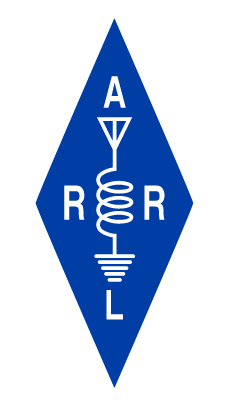Team In-person Training
The seven New England sections have received training using a custom-developed handout along with the ARDC-funded RFI equipment.
Training Videos
Ed Hare, W1RFI, the (retired) Manager of the ARRL Lab, gives pointers for finding RFI sources and working with neighbors and utilities:
HAM-CON 2022: Interference to Ham Radio
Rob, K1UI and Annette, KA1RFI use a power line RFI case study to show how the on-line RFI troubleshooting guide is used.
Ham Exposition 2022 RFI Presentation
KY4BDP and the Lake Cumberland (KY) ARA ith a case study of how he eliminated RFI in his shack, including RFI reducing techniques:
LCARA HAM Radio: Reducing RFI in the HAM Shack!!!!
Another examination of what some common RFI sources sound like on a battery-operated receiver:
(12) Detecting RFI Sources in the Shack and Home – YouTube
Life-long Learning ARRL RFI Presentation (Paul, W1VLF @ ARRL Lab):
Identifying and Locating Power Line Noise:
Some general observations from the literature – there are two fundamental types: corona or brush discharge (from a point or sharp edge in contact with a high voltage line, usually above 100 KV) and microgap discharges ( where small high resistance gaps in the presence of high magnetic fields around power lines cause small sparks.) The two display slightly different characteristics, in particular, how quickly the broadband noise falls off with increasing frequency. Corona discharge falls off much more rapidly with increasing frequency. It is unusual for lines carrying less than 1 KV to cause RFI but they may conduct RFI from other sources. In addition, microgap discharges can occur from adjacent structures like loose or failing pole hardware, wire or chain link fences or even rain gutters. Corrosion in such nearby structures can amplify the effect.
If available, look at your transceiver received audio display for consecutive noise peaks 8 ms apart. There may be more than one set. If you can rotate your antenna, note the heading where the noise peaks. Searching along that heading will yield the quickest results. I another ham with a rotatable antenna can work with you, is several miles away and also hears the noise, triangulation can cause an even smaller area to search.
It isn’t unusual for the power line noise to go away when it rains or is just very humid causing small spark gaps to fill in.
Locating Power Line RFI in the Field:
ARRL: Identifying Power Line Noise
Radio Frequency Interference at W9RE suspect power pole Nov 1, 2019
Identifying and Locating Radio Frequency Interference (RFI) | Interference Technology
A Case Study of One Ham’s (W5KUB) Experience with an In-house RFI Problem:
Locating RF interference on your power mains
Check out the Ham Radio Crash Course U-Tube channel for several videos on using the IC705 with Chameleon loops as well as more RFI hunting information. You’ll need to scroll through the ads, but…
KA6WKE Discusses station grounding, filtering and use of magnetic loops:
(12) Radio Frequency Interference (RFI) Resolution Tutorial – YouTube
VE6EY Discusses Power-line Related RFI and Ways to Deal with it:
(12) Power System RF Interference Spectrum – YouTube
Techniques and High-end Tools for Locating RFI Written by a Well-known Consultant to Industry:
https://interferencetechnology.com/identifying-and-locating-radio-frequency-interference-rfi/
A Recent Presentation by Tony, K1KP on Finding the Source of RFI and Some Ways of Dealing with it
(1) Tools & Techniques for Tracking Down RFI- 04/22/2022 – YouTube
RFI Sources Reported to Teams:
Noise Sources Reported to RFI Teams – ARRL New England Division
A Few More References:
Using a simple AM radio to find RFI
Sample letter from the FCC to an identified RFI generator
Some actual RFI hunting experience and spectrum examples are provided by RFI Snapshots – NK7Z.NET
Some Notes about Escalation
- It is always best to assume that the person responsible for the RFI doesn’t know that they are or even what RFI is or why it is a problem. Never lose your temper. If the situation starts to become confrontational, apologize for having disturbed the individual and walk away.
- Dealing with these issues at the lowest possible level gives the best chance of getting to the desired outcome. This includes dealing with utilities if there is a contact in the maintenance department but be sure to use their process (get a case number.) Utilities may have scheduling and parts supply issues that we don’t know about. Our credibility with utilities depends on both our demonstrated competence and our ability to work with them. See item 1.
- Some situations require escalation to resolve. Most of the time this will be to have a vendor address a design problem but occasionally will involve a neighbor who isn’t cooperative. In order to write a letter to the vendor or neighbor, the ARRL needs a complete understanding of the case, so get together all the information they need before contacting the ARRL Lab. Once it is in their hands, they will decide if the situation needs to be further escalated to the FCC. One of the causes of negative outcomes is a requestor “blitzing” all the organizations already involved in resolving the issue. It does require patience but once the ARRL and/or FCC is involved, further contact with the RFI generator won’t be helpful.
updated 5/7/23
